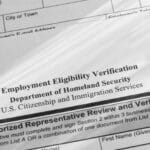As part of the CARES Act, many banks are participating in the SBA’s Paycheck Protection Program (PPP), providing funds to hundreds of Americans and small businesses. Once the loans are funded, then what? We’ve received many questions on how to account for the PPP loans processing fees – such as, “Can we recognize the income now, or do we need to amortize over the life of the loan?” and “What is the life of the loan – eight weeks or two years?” Below are summarized answers in accordance with the current guidance.
How to Treat Loan Fees
According to ASC 310-20, these loan fees should be treated as a net deferred loan fee and amortized over the life of the loan. This is consistent with the recognition of loan fees for all existing loan types. In addition to calculating the amount of income, banks should consider other loan costs related to these fees that would be deferred as well, such as payroll and personnel expenses.
The bank may need to do a cost analysis to estimate the time and expenses associated with the PPP loans and offset the related loan fee income.
Determining the Life of the PPP Loans
The maturity of these loans is two years, so we should see a deferral period (life of loan) of two years, but this would need to be adjusted for any forgiveness and/or prepayment.
ASC 310-20 allows the bank to elect the prepayment method in accounting, assuming the prepayments are probable and the timing can be estimated.
We believe the loans forgiven by the SBA would be considered loan prepayments, so if you believe the loan forgiveness is probable, then you would use a life of eight weeks; otherwise, you would need to use two years. If the prepayment method is not elected, then the bank must account for the prepayments as they occur.
Can we use the cash basis of accounting?
Just like your loan fees for all existing loan types, there may be a practical solution of recording the PPP loan fees and related costs on the cash basis, thus you would recognize the income when you receive the fee from the SBA.
Your bank should consider the materiality of ASC 310-20 and whether amortizing over the life of the loan is material. Some things to consider:
- Are the related fees and costs immaterial to the financial statements?
- Is it anticipated that the majority of the bank’s PPP loans will be forgiven prior to June 30, thus the fees and costs would be recognized in the 2nd quarter under either the cash method or ASC 310-20, resulting in the same income under both methods?
If your answer is yes to one or both of the questions above, then it may make sense for you to account for these fees on the cash basis. If you decide to go this route, then you should be sure to document how you came to this conclusion and what materiality factors you used.
We are anticipating that there will be additional guidance provided with the June 30 call report instructions, and we will provide an update at that time.









